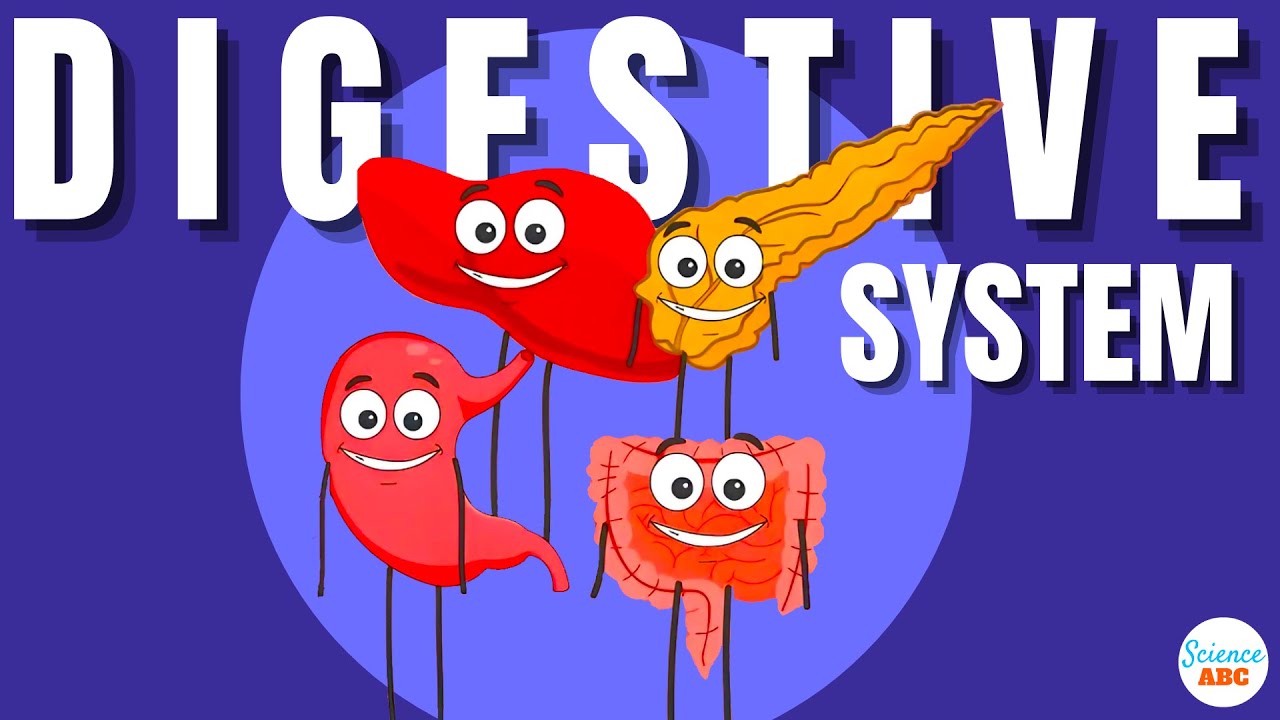Proses Pencernaan Makanan pada Manusia
Summary
TLDRThe human digestive process begins with food entering the mouth, where it is mechanically and chemically broken down into a bolus. This bolus travels down the esophagus, aided by peristaltic movements, and enters the stomach, mixing with gastric acid to form chyme. Chyme then moves into the small intestine, where nutrient absorption occurs through villi, supported by secretions from the pancreas and liver. Unabsorbed food passes to the large intestine, which absorbs water and compacts waste into feces, ultimately leading to the rectum and triggering the defecation reflex.
Takeaways
- 😀 The human digestive process begins when food enters the mouth, where it is mechanically broken down by teeth and chemically by saliva.
- 😀 The chewed food, called bolus, is pushed by the tongue towards the pharynx to trigger the swallowing reflex.
- 😀 The larynx prevents food from entering the trachea as it moves down to the esophagus.
- 😀 In the esophagus, food is propelled towards the stomach through peristaltic movements.
- 😀 The esophageal sphincter allows the bolus to enter the stomach, where it mixes with gastric acid.
- 😀 The mixture in the stomach is termed chyme, which moves through the pyloric sphincter into the small intestine.
- 😀 The small intestine comprises the duodenum, jejunum, and ileum, aided by secretions from the pancreas and liver for digestion.
- 😀 The surface of the small intestine is covered with villi, which are responsible for nutrient absorption into the bloodstream.
- 😀 Nutrients are distributed throughout the body via the bloodstream, while unabsorbed food passes to the ileocecal valve.
- 😀 The large intestine functions to absorb water, produce vitamins, and form mucus, ultimately moving waste toward the rectum for defecation.
Q & A
What initiates the human digestive process?
-The human digestive process begins when food enters the mouth.
How is food mechanically and chemically broken down in the mouth?
-Food is mechanically broken down by the teeth and chemically by saliva.
What is the bolus, and what role does it play in digestion?
-The bolus is the mass of food that is formed in the mouth and is ready to be swallowed.
What prevents food from entering the trachea during swallowing?
-The larynx prevents food from entering the trachea during the swallowing reflex.
What process moves food from the esophagus to the stomach?
-Peristaltic movement pushes food from the esophagus to the stomach.
What happens to the bolus in the stomach?
-In the stomach, the bolus mixes with gastric acid, forming a substance called chyme.
What is the function of the pyloric sphincter?
-The pyloric sphincter controls the passage of chyme from the stomach to the small intestine.
What role do the pancreas and liver play in digestion?
-The pancreas and liver secrete substances that aid in the digestive process in the small intestine.
What are villi, and why are they important?
-Villi are small projections in the lining of the small intestine that increase surface area for nutrient absorption.
What happens to undigested food in the large intestine?
-Undigested food passes through the ileocecal valve into the large intestine, where water is absorbed and waste is formed.
Outlines

This section is available to paid users only. Please upgrade to access this part.
Upgrade NowMindmap

This section is available to paid users only. Please upgrade to access this part.
Upgrade NowKeywords

This section is available to paid users only. Please upgrade to access this part.
Upgrade NowHighlights

This section is available to paid users only. Please upgrade to access this part.
Upgrade NowTranscripts

This section is available to paid users only. Please upgrade to access this part.
Upgrade NowBrowse More Related Video
5.0 / 5 (0 votes)





